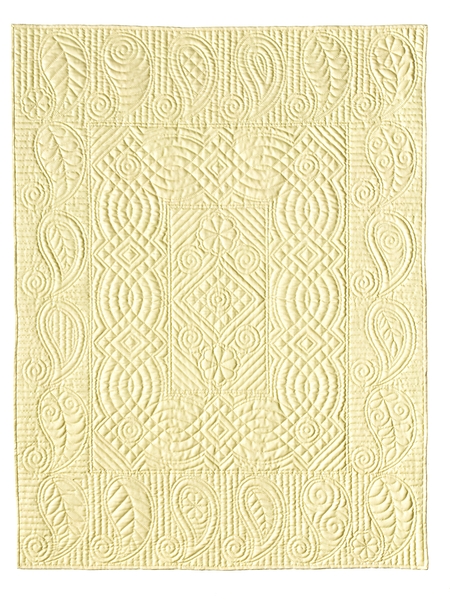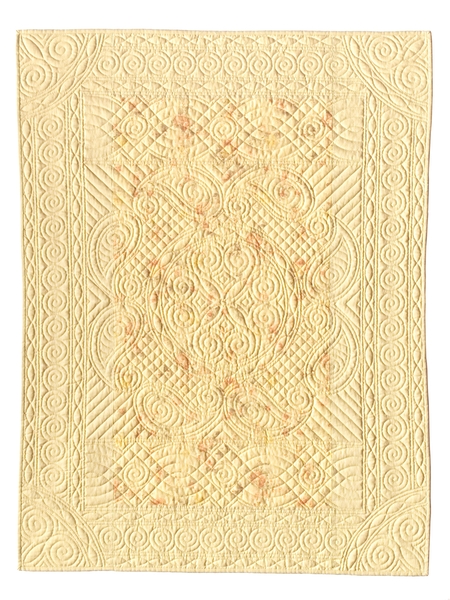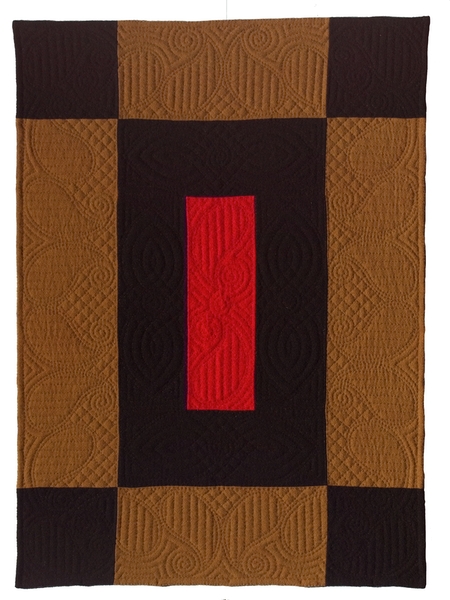Notes
The top and bottom centre paisleys from Cariad (Sweetheart) were refilled and rotated 90 degrees and the paisley pairs underneath opened out to give a new centre. The simple fan used in the same quilt was replaced by one constructed from the rose and petal motifs. The outer border features the original Welsh trail design. Hand quilted on RJR cotton sateen.
All quilts in the first collection, Paisley Renaissance, contained a stylised but faithful version of Mrs Thomas' original Paisley motif. Sandie wanted to explore the design potential beyond that constraint by adapting the motif with different in-fills and embellishments, so had started to design a new series.
Ten years after her first gallery at the 2007 Festival of Quilts, she applied for a 2019 gallery space for 25 new, hand-quilted Paisley cot quilts, thinking two years would give her plenty of time to make them. However, the project went on the back-burner when she had not heard back after a month or two. Then, in June 2018 she received an email giving her the gallery space for the 2019 show. That was only a year away, so in order to meet the deadline she designed and make one hand-quilted cot quilt every 10 days or so!
Hand-quilted quilts tend to be in the minority at most shows, and since quilts on display are the 'finished product' with only their labels offering any insight into how or why they were made, Sandie decided to provide extensive support material for the show...
- From a design point of view, she had recently published her book on Welsh Quilting Design, so that was made available at the show.
- She also intended to put herself 'on show' by sitting and working on an unfinished piece, so inviting comment and questions about her techniques (this led to some ad hoc filming by a keen craft vlogger, the results of which can be seen on the Arnold's Attic channel on YouTube).
- Her recently-retired husband, who has a keen hobby interest in applied computing, was drafted in to create some time-lapse videos of the various stages of the quilt-making process (drawing, basting, quilting, binding and edging) and these formed part of an interactive display within the gallery.
- The use of explanatory labels showing line diagrams of the quilting elements had received positive feedback at the original Paisley Renaissance exhibition in Lampeter in 2016, so he went one step further for the Paisley Parade gallery at Festival in 2019 by creating a local website within the gallery that could be browsed for background information and animations of how the designs were constructed from the basic motifs and how they were all linked back to one quilt in the exhibition, Paisley Parade.

































